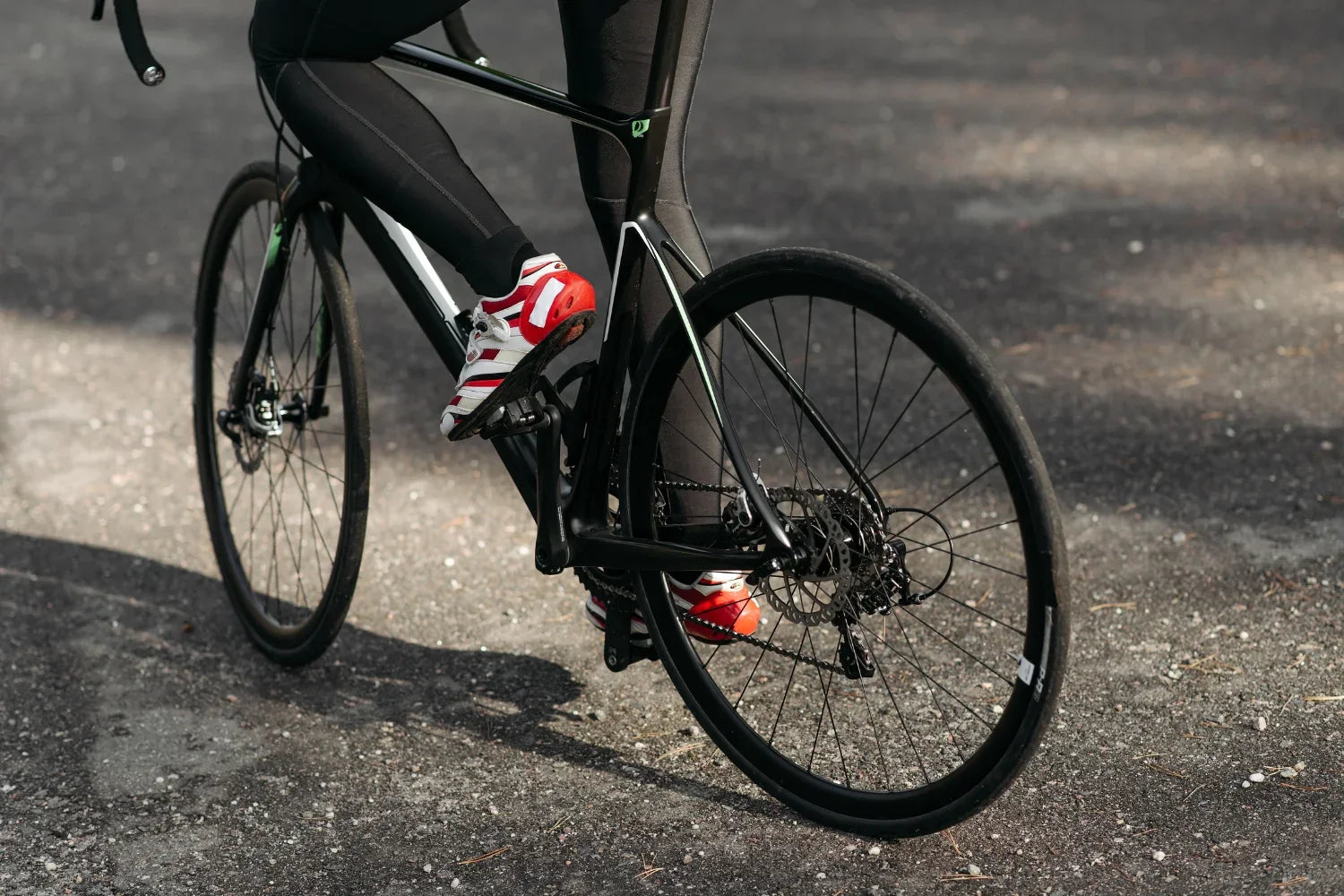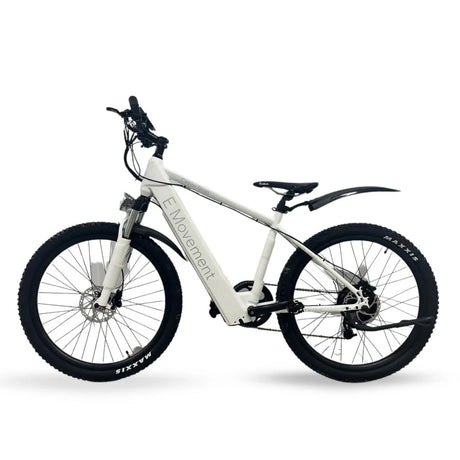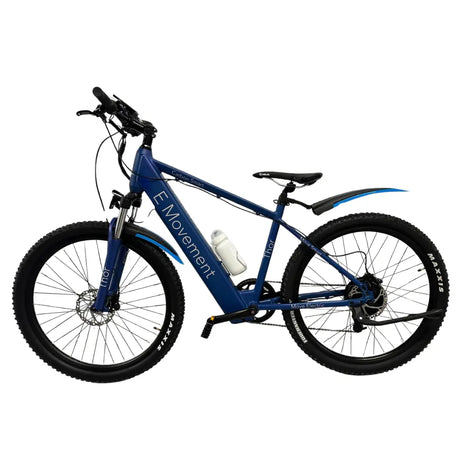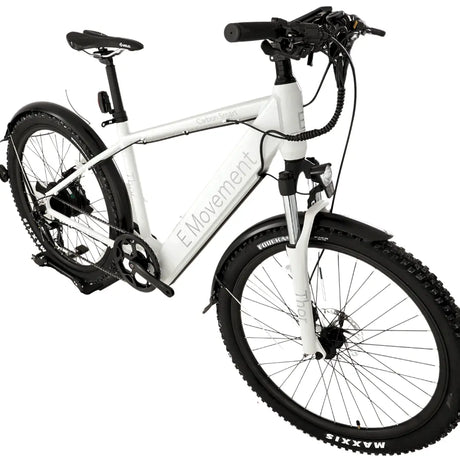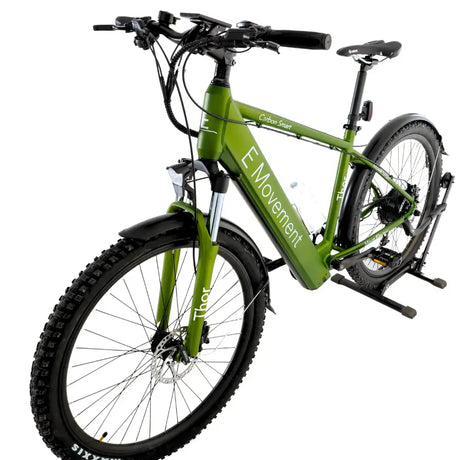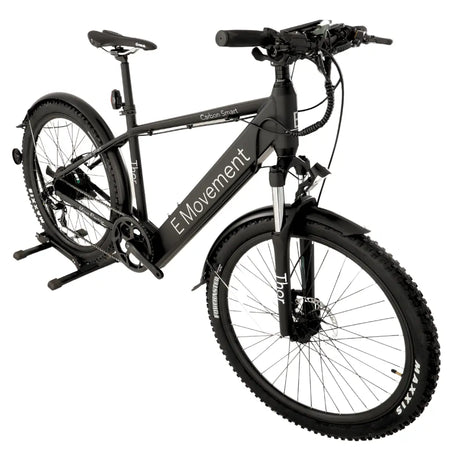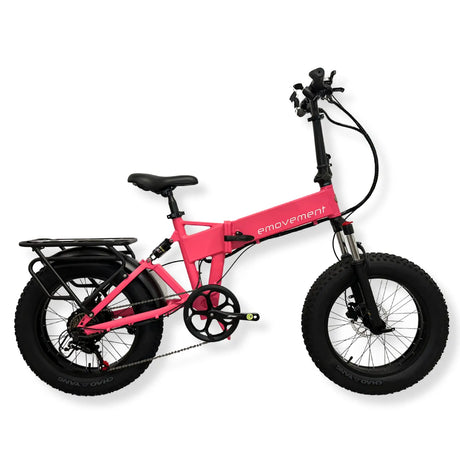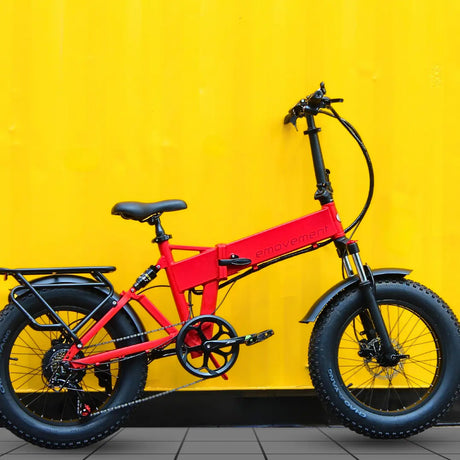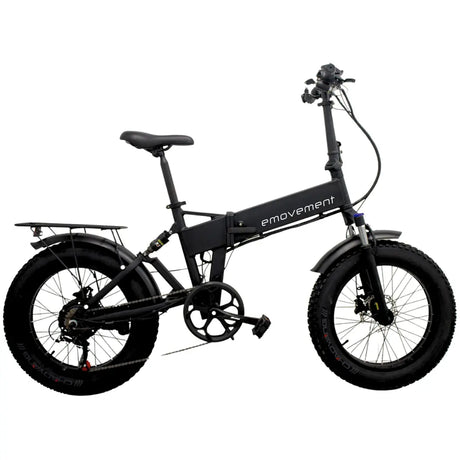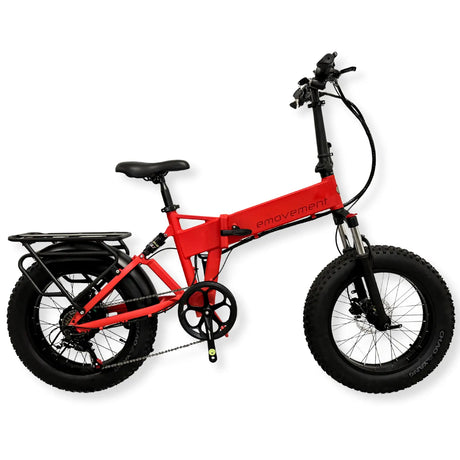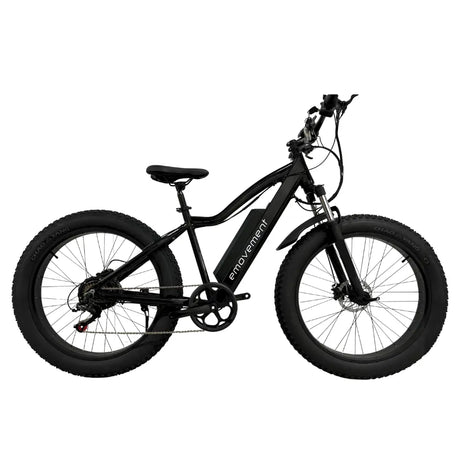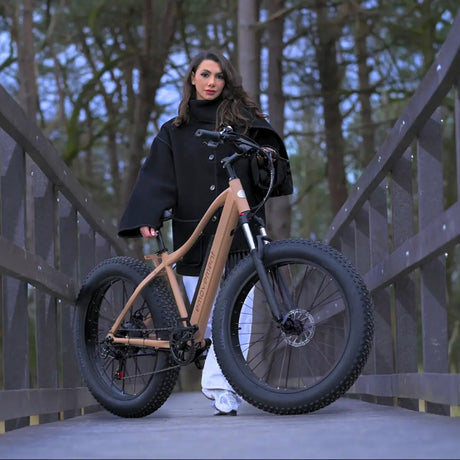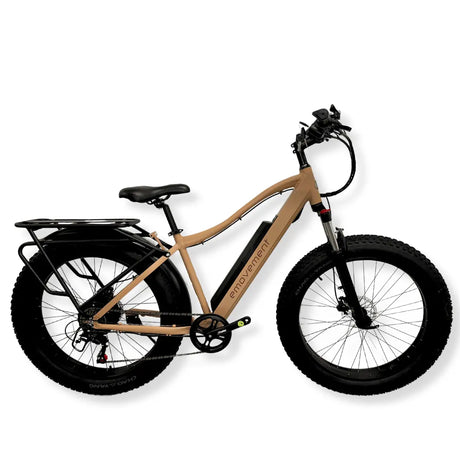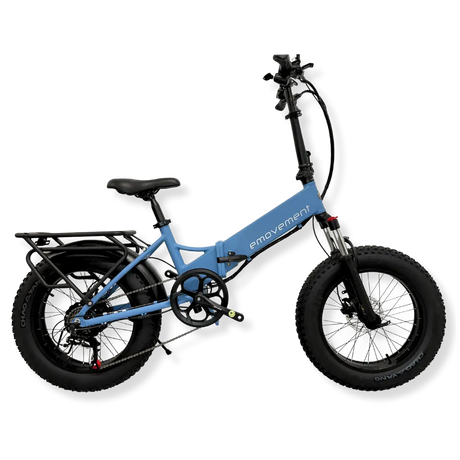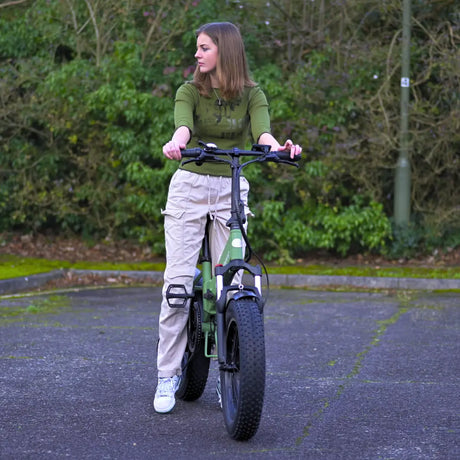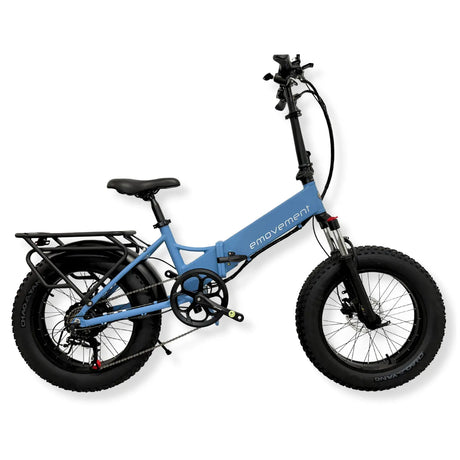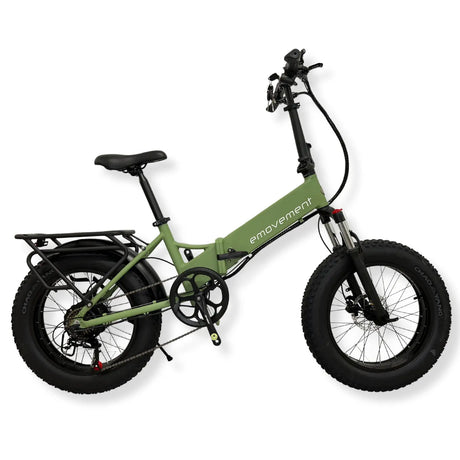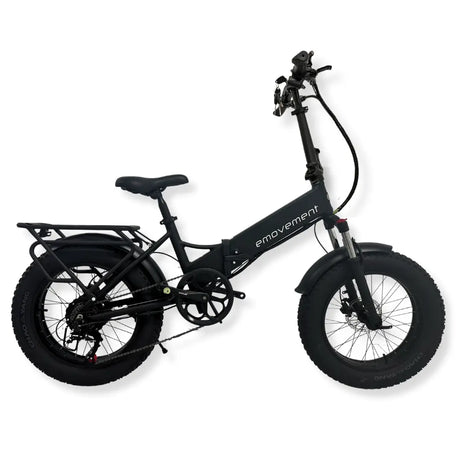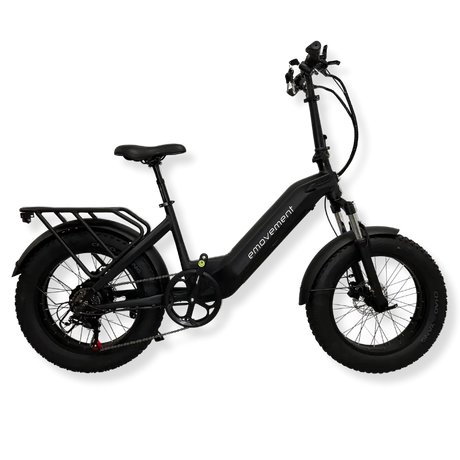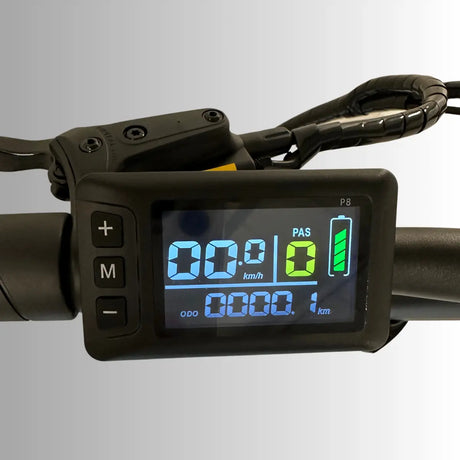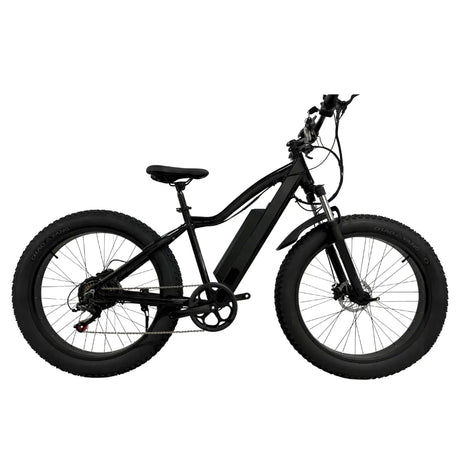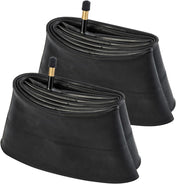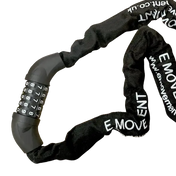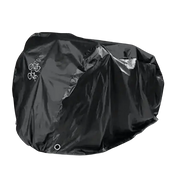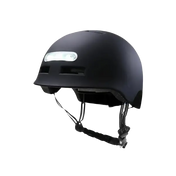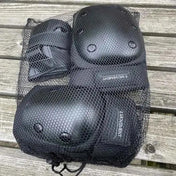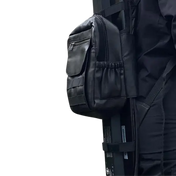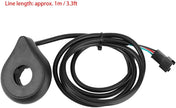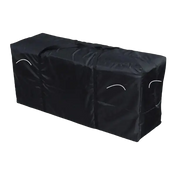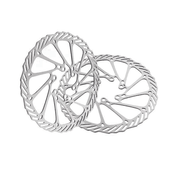Electric bikes are changing how we move, offering a thrilling combination of speed, convenience, and eco-friendly practices. But if you’re new to them, you might wonder how fast electric bikes go.
An e-bike’s max speed depends on factors like motor power, local regulations, and terrain. Keep reading as we break down the different speed classes and highlight some of the fastest bike models to help you understand the ins and outs of e-bicycle speed.
Understanding Electric Bike Speeds
Before diving into the technical details, it's crucial to understand that the speed of electric bikes isn't one-size-fits-all. How fast an e-bike can go is influenced by the type of motor, battery capacity, and even the bike's weight:
Components That Influence Speed
Let’s consider the main bike components that play a significant role in how fast you can ride on your electric powerhouse:
I Motor Types and Power
The motor is the powerhouse behind every e-bike's speed, driving the wheels and propelling the bike forward. The two most common motor types are:
-
Hub-Drive Motors: Hub-drive motors are positioned within the wheel hub and are often less expensive, making them ideal for casual riders. They typically have power outputs ranging from 250w to 750w, translating to top speeds between 30 and 45 kph. However, motors above 250w and speeds above 15.5 kph are not considered road-legal e-bikes; they follow motorcycle rules and must be registered with the DLVA.
-
Mid-Drive Motors: Placed centrally in the bike's frame, these motors offer better power distribution and are favoured for off-road and high-speed biking. Mid-drive motors generally provide 500w to 1,000w of power, allowing speeds up to 45 kph or higher.
II. Battery Capacity and Efficiency
A well-designed battery significantly enhances an electric bike's speed and performance by providing the necessary power to sustain high speeds and long rides. Most bikes operate on 36v or 48v batteries, with capacities ranging from 10Ah to 20Ah. Higher voltage generally translates to greater speeds, while higher amp-hour ratings indicate longer battery life. For instance, a 48v battery paired with a 250w motor can provide faster acceleration and higher cruising speeds than a 36v battery with the same motor power.
Additionally, advanced Energy Management Systems (EMS) are crucial in optimising power delivery, ensuring consistent speed and improving overall performance. These systems intelligently manage the battery's energy flow to prevent over-discharging and extend battery life, while improving speed stability when climbing hills or riding in challenging conditions.
III. Bike Weight and Aerodynamics
Lighter, streamlined bikes can reach higher speeds more effortlessly due to reduced drag and inertia. Heavier e-bicycles tend to be slower because of the added weight that requires more power to accelerate, such as those equipped with larger batteries or cargo capabilities. This extra weight makes it challenging for the motor to maintain consistent high speeds, particularly when climbing hills or accelerating from a standstill.
Aerodynamics also plays a pivotal role in speed performance. Streamlined frames, like those of road and hybrid electric bikes, with tucked-in cables, and narrower tyres reduce wind resistance, allowing electric bikes to slice through the air more efficiently. The result is improved energy efficiency and faster cruising speeds.
The Mechanics Behind Speed
Torque is the twisting force that propels the bike. Higher torque means quicker acceleration and better hill-climbing ability. In contrast, power output measures the motor's energy consumption. Low-power motors (250w) generally provide up to 15.5kph, making them suitable for urban commuting. High-power motors (500w or above) enable speeds up to 45 kph and higher, ideal for high-speed riding.
Gearing also plays a pivotal role in optimising speed based on terrain and rider preference. Single-speed bikes are simpler with fewer parts and are perfect for flat terrains and casual riding. However, multi-speed gearing allows riders to adjust gear ratios for better efficiency, acceleration, and speed. Mid-drive motors work seamlessly with multi-speed gearing, providing smoother transitions and maximising power output.
The Average Speeds of Different Electric Bike Types
If you’re wondering about the average speed of an electric bike, it depends on factors like motor power, terrain, and rider preferences. You’ll find the average speeds of commuter e-bikes with 250w motors ranging from 15 - 25 kph and off-road bikes with 500w motors, 32 and 45 kph. The UK law binds electric bike companies to ensure that the maximum speed of electrical assistance is 25km/h. Those with a motor power rating above 250w do not classify as EAPCS (Electrically Assisted Pedal Cycles) and must be registered, taxed, and insured if you intend to use them on public property.
Know that the fastest electric bike speed record is held by Neil Campbell, who reached a top speed of 280 kph in 2021 on a custom-built bike. And the longest e-bike ride record is held by Delfast's Top 3.0 in the Guinness World Record for the longest range covered on a single charge, reaching 367 kilometres.
How Fast Can an Electric Bike Legally Go in the UK
In the UK, e-bike speed regulations are clear-cut and designed to ensure safety and consistency on public roads. Let's dive into the specific classifications.
Class 1: Pedal-Assist Without Throttle
Also known as pedelecs, Class 1 electric bikes rely solely on pedal assistance without a throttle. They feature a motor with a maximum power output of 250w and can assist riders up to a top speed of 25 km/h. Beyond this speed, the motor automatically cuts out, leaving riders to pedal under their power. Pedelecs are treated as regular bicycles and can be ridden on bike lanes, roads, and most cycle paths.
Class 2: Throttle-Assisted Up to a Certain Speed
Class 2 e-bikes have a throttle allowing riders to accelerate without pedalling. However, throttle assistance is limited to 3.7 kph in the UK. Like Class 1 e-bicycles, Class 2 models have a 250w motor limit and a top speed of 25 kph under pedal assist.
Class 3: Higher Speed Pedal-Assist
These electric bikes are not recognised in the UK under the same terminology. Instead, e-bikes that exceed the 25 km/h speed limit are classified as speed pedelecs. With speeds up to 45 kph, Class 3 bikes are considered motor vehicles. The UK’s electric bike law requires registration, insurance, and a driver's licence. Additionally, riders must wear helmets and are not permitted on cycle paths or bike lanes.
Factors Affecting Electric Bike Speed
Although the mechanics and regulations set the framework for electric bicycle speed, real-world conditions can remarkably influence their speed:
The Influence of Terrain on Speed
Terrain plays a crucial role in determining how fast an e-bike can go:
- Flat Terrain: Electric bikes can easily reach maximum speeds on the ground, whether under pedal-assist or throttle. Commuters with lower power motors perform well on flat terrain, typically maintaining speeds between 25 and 32 km/h. A streamlined posture can improve speed by reducing air resistance on flat terrain.
- Hilly Terrain: Climbing hills demands more power and torque. Bikes with mid-drive motors can maintain faster speeds uphill, while hub motors may struggle and slow down significantly. Mid-drive motors leverage the vehicle's gears, offering better control and efficiency.
- Off-Road Terrain: Gravel, dirt, or mud adds resistance, reducing overall speed. Electric mountain bikes are designed for these conditions, but the bumpy terrain and obstacles may still slow them down. Additionally, knobby tyres that provide better traction generate more rolling resistance, reducing speed.
The Effects of Rider Weight and Bike Load
Rider weight and additional load significantly impact an e-bike's acceleration and top speed. Heavier riders put more strain on the motor, which can decrease acceleration and potentially limit top speed. This is particularly true for electric bikes with less powerful motors. You can compensate for the limitation with higher-torque motors to enjoy a smoother, more consistent riding experience.
Similarly, carrying extra cargo, such as groceries or work equipment, affects an e-bicycle's performance as much as the rider's weight. Even though cargo bikes are specifically designed to transport heavy loads, their speed still decreases proportionally with weight. To counter this, many come with dual-battery setups or higher-capacity batteries to maintain speed and range despite the additional burden.
Weather Conditions and Their Impact on Speed
Weather conditions can affect an electric bike's speed and overall performance:
- Rain: Wet conditions may cause slippery surfaces, forcing riders to slow down for safety. Water can also impact the bike's electronic components and motor efficiency. We recommend protecting your bike and improving visibility in rainy weather with high-quality waterproofing and mudguards.
- Wind: Riding into a headwind dramatically reduces speed, as the motor has to work harder to overcome resistance. Conversely, a tailwind might provide a helpful boost. Riders can minimise wind resistance by adopting a more aerodynamic posture or using accessories like streamlined helmets.
- Temperature: Extreme cold can reduce battery efficiency, limiting the range and power output. While less detrimental, hot weather may still affect battery performance over long periods. Riders should store batteries indoors in extreme temperatures and consider insulating battery covers for better temperature regulation.
Enhancing Your Electric Bike’s Speed
A few tweaks and upgrades can make a noticeable difference for those looking to get more out of their electric bike. Here’s how you can maintain optimal speed while exploring potential upgrades:
Tips for Maintaining Optimal Speed
Managing top speed starts with regular care and smart riding habits:
-
Regular Maintenance: Keeping your e-bike well-maintained is crucial for maintaining its speed. Frequently check tyre pressure, lubricate the chain, and ensure brakes aren’t dragging. Properly inflated tyres decrease rolling resistance, and a well-lubricated chain provides efficient power transfer.
-
Firmware Updates: Check for firmware updates for your motor controller or display. Some updates can improve efficiency, enhance power delivery, and ultimately help you achieve better speeds.
-
Battery Health: Battery performance directly impacts speed. Your battery must be fully charged before each ride, and avoid running it down to very low levels. Store your battery in a cool, dry place so it does not malfunction or explode in extreme temperatures.
-
Aerodynamics: Minimise air resistance by adopting a streamlined posture and reducing unnecessary accessories. Switching to narrower tyres can also reduce drag, increasing speed on smooth surfaces.
Upgrades That Can Increase Speed
Upgrades offer a direct way to boost your bike's speed and performance:
-
Motor Upgrade: Replacing your existing motor with a more powerful one can significantly improve speed. However, ensure the new motor complies with local speed regulations.
-
Battery Upgrade: When you upgrade to a battery with a higher voltage or capacity, you’ll improve acceleration and maintain higher speeds for longer distances. For this, your motor controller has to be compatible with the new battery.
-
Controller Upgrade: The motor controller regulates how much power flows to the motor. A higher-capacity controller delivers more power, giving better acceleration and top speed.
-
Gearing Changes: Adjusting the gear ratio will help you pedal faster, especially if you have a mid-drive motor. Choose higher gears to increase your pedalling cadence at higher speeds.
-
Lighter Components: If you wish to enhance the acceleration and speed of your electric bike, reduce the weight by switching to lighter components, such as carbon fibre frames or wheels.
Comparing Electric Bike Speeds with Other Modes of Transportation
E-bikes are becoming increasingly popular due to their speed, convenience, and environmental benefits. In this section, we’ll consider how they stack up against other modes of transportation:
Electric Bikes vs. Traditional Bikes
These bikes generally outperform traditional bikes in terms of speed. While an e-bike’s average speed ranges from 20 to 25 kph, electric bikes can comfortably maintain speeds between 25 and 32 kph. High-performance models can even reach speeds up to 90 km/h or more, especially on flat terrain or downhill. Additionally, the assistance provided by the electric motor makes climbing hills and overcoming headwinds much easier.
How Do Electric Bikes Stack Up Against Public Transportation?
E-bikes often provide a faster and more reliable means of travel for short distances compared to public transport. It is subject to schedules, delays, and crowded routes. An e-bicycle can frequently beat buses and subways during rush hour to cover a 7-8 kilometre commute in around 15-20 minutes. This is particularly useful in urban areas where distances are often under 15 kilometres. Individuals also reach their destination directly without transferring between different modes of transport.
Comparing Electric Bike Speeds to Electric Scooters and Motorcycles
Electric bikes, electric scooters, and motorcycles are all excellent options for urban mobility, but their speeds vary significantly:
- Electric Bikes: Most bikes designed for urban commuting fall into Class 1 and Class 2 categories, reaching top speeds of up to 32 kph. High-performance Class 3 e-bikes can achieve up to 45 kph and require special licences and registration.
- Electric Scooters: Most electric scooters designed for urban commuting reach speeds between 30 and 40 kph, similar to Class 1 and Class 2 electric bikes. High-performance scooters can reach up to 65 kph, making them faster than commuter bikes. These scooters generally have more powerful motors and larger batteries, but often face stricter regulations.
- Electric Motorcycles: Electric motorcycles are in a league of their own. Models like the Harley-Davidson LiveWire or Zero SR/F can exceed 160 kph, far surpassing the top speeds of e-bikes. Their powerful motors, large battery capacities, and advanced designs make them better than traditional motorcycles in speed and performance.
Electric Bike Racing
E-bike racing is quickly emerging as an exciting niche sport. It offers enthusiasts the chance to push their bikes to their limits. With high-speed circuits, thrilling sprints, and challenging terrains, it blends the excitement of traditional bike racing with the unique power of electric technology.
This type of racing is a relatively new sport that has gained traction because of the rapid evolution of technology. It covers a range of formats, including:
- Circuit Racing: Riders compete on closed circuits, testing speed and handling.
- Hill Climbing Events: Competitors race against the clock on challenging uphill courses to see who can reach the top fastest.
- Endurance Racing: Teams compete in relay-style endurance races to determine the riders' stamina and the e-bikes' battery life.
In these races, electric bicycles can reach speeds exceeding 80 kph to create an adrenaline-pumping spectacle for both participants and spectators. The races often feature high-performance e-bikes with custom modifications, enabling participants to reach incredible speeds on specially designed courses.
Electric bike racing occurs on private properties, where you can use unrestricted e-bikes. However, you cannot use those bikes on roads and public properties.
Notable Electric Bike Races
Electric bike racing has a growing number of notable events and records. Here are some highlights:
-
Electric Bike Grand Prix (EBGP): Hosted by Electric Bike Racing (EBR) in the UK, the EBGP is a premier electric bike racing event. It features various race classes, like amateur and pro circuits, where riders can test their skills and bikes.
-
Pikes Peak International Hill Climb: This iconic hill climb event in Colorado, USA, includes an e-bike division for riders to compete on the gruelling uphill course. A peak elevation of over 14,000 feet, it's a true test of an electric bike's power and rider endurance.
-
World E-Bike Series (WES): WES is an international bike racing series focused on e-mountain biking. Cyclists tackle off-road terrains in a combination of downhill and cross-country formats.
-
Isle of Man TT E-Bike Race (TT Zero): Although the TT Zero has been on hiatus since 2020, it remains one of the most prestigious electric motorcycle races showcasing the potential of high-speed electric racing.
Revvi Cup: They host the UK’s only electric balance bike races, allowing little kiddos to have fun in a safe environment.
If interested, check out electricbikeracing.co.uk for more information on this thrilling sport and upcoming races.
Speed as a Factor in Electric Bike Safety
As electric bikes become faster and more powerful, understanding the relationship between speed and accident rates, and how safety features can help mitigate risks, is crucial:
The Correlation Between Speed and Accident Rates
Studies consistently show a strong correlation between speed and accident rates. Higher speeds reduce the time available for reaction, increasing the likelihood of collisions. In urban settings, the risk is even greater since traffic density is high and the road layout is complicated.
E-bikes that exceed 32 kph pose a higher risk for several reasons. Riders have less time to react to sudden obstacles, pedestrians, or vehicles at top speeds, which leads to more severe injuries. Stopping distances also increase significantly; for instance, stopping from 45 kph can take almost twice as long as stopping from 25 kph.
While data on electric bike accidents is still emerging, the trend indicates that speed plays a pivotal role in the severity of accidents, particularly in urban environments. This further underscores the importance of adhering to speed limits, using appropriate safety gear, and implementing effective traffic regulations to enhance rider safety.
Safety Features to Manage Higher Speeds
To avoid the risks associated with high-speed riding, manufacturers have introduced several safety features that can make fast electric biking safer:
-
Prioritise hydraulic disc brakes. These provide superior stopping power compared to mechanical brakes, allowing for shorter stopping distances even at high speeds. The responsiveness of hydraulic systems also improves rider control.
-
Get integrated lights and reflectors. High-quality front and rear lights enhance visibility for both the rider and others on the road. Opt for reflective strips on tyres and frames to navigate routes effectively in low-light conditions.
-
Leverage advanced suspension systems. A good suspension system helps absorb shocks from bumps and potholes, improving stability and control. Full-suspension e-bikes are particularly beneficial for off-road and high-speed downhill riding.
-
Look out for motor cut-off features. Some e-bicycles are equipped with motor cut-off switches that deactivate the motor when braking or if the rider suddenly dismounts. This feature prevents unintended acceleration and helps reduce accident severity.
-
Equip yourself with protective gear. Helmets are a must, but additional gear like knee pads, elbow guards, and padded gloves significantly decreases the chances of injury in accidents.
-
Ensure speed limiters and modes. Most electric bikes come with programmable speed limiters, enabling riders to cap their top speeds according to local regulations. Multiple power modes (eco, normal, sport) allow riders to choose a speed level that matches their experience and road conditions.
Summary
From understanding the components that influence speed to exploring the mechanics behind high-speed e-bikes, it's clear that they can achieve impressive velocities under the right conditions. Regulations play a crucial role in shaping how fast these bikes can legally go, especially in the UK. However, high-performance models continue to break speed barriers, pushing the limits of what's possible.
The future of electric bikes in urban planning looks promising as high-speed ones become more integrated into city transportation systems. Although challenges such as safety, infrastructure adaptation, and public perception remain, innovative solutions are emerging to address them. Electric bikes offer a glimpse into the future of urban mobility, providing a sustainable and exhilarating alternative to traditional vehicles that can lead the way in creating cleaner, smarter cities.
FAQs
1. How fast can an electric bike go?
Typically, an e-bike’s speed depends on factors like weight, power, and incline, and unrestricted electric bikes can go up to 40 km/h on average. You may find some advanced models speeding up to 96km/h. However, in the UK, manufacturers are legally required to set the upper speed limit to 25 km/h.
1. What is the fastest electric bike available?
One of the fastest electric bikes available from our collection is the Thor eMTB. Having the ability to reach top speeds, it features 250w and 350w motor variants, and a robust 36v 10Ah battery. Riders can enjoy a range of up to 60 kilometres on a single charge. Its lightweight aluminium alloy frame and full suspension system make it perfect for off-road adventures, allowing riders to tackle rugged terrain with speed and agility. Thor's hydraulic disc brakes, Shimano 7-speed gear system, and high-torque motor provide exceptional control and power. If you’re interested, you can purchase it here.
2. How do electric bike speeds vary with battery life?
E-bike speeds are directly related to battery life. As the battery charge decreases, the motor may receive less power, reducing speed and acceleration. Higher speeds consume more energy, depleting the battery faster and reducing the overall range. To maintain consistent speed, you must have a fully charged battery or consider dual-battery setups for longer rides.
3. Can electric bike speeds be increased safely?
You can safely increase speeds through a combination of upgrades and proper maintenance. Upgrading to a more powerful motor, improving aerodynamics, and using high-capacity batteries can help boost speed. However, it's important to adhere to local regulations and ensure the bike has adequate safety features to handle the increased speed, such as hydraulic brakes and quality suspension.
4. Are there special licences required for high-speed electric bikes?
In the UK and EU, fast electric bikes exceeding 25 km/h and having motors above 250w are classified as "speed pedelecs.” It requires registration, insurance, and a driver's licence. Riders must also wear helmets and follow regulations similar to MOPEDS.

